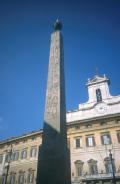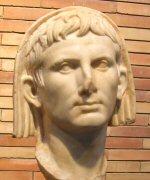Outline
2022/23
This module concentrates upon a critical period of Roman history, during which the society, economy, culture, and politics of Rome, Italy and the provinces underwent dramatic transformation. It seeks to explore how there was no single moment of transformation, but a sequence of experiments and changes throughout the period 44 BC - AD 14. It explores the emergence of a new political and social order at Rome and beyond, in Italy and the provinces - not just in the form of the princeps himself, but also new noble families, the imperial household (including women, children, freedmen, and slaves), equestrians, and the inter-relationship between the plebs of Rome and Rome's ruler. The module deals with political, economic, social, and cultural issues, confronting them through an inter-disciplinary study of literature, art, archaeology, inscriptions, architecture, and coins. The module does not limit itself to the figure of Augustus himself, nor even to the city of Rome, but also considers the impact of Augustus’ reign upon Italy and the provinces. It examines the transformation of Roman society as reflected in legislation, ideology, religion, and economy. It also assesses the changing perception of Augustus’ historical importance in the eyes of post-antique societies, considering factors behind the relatively recent emphasis on Augustus rather than Julius Caesar as the key figure in the history of Rome.
By the end of the module, students should be able to:
- assess the significance of material culture in the self-presentation of the Augustan regime
- appreciate the complexities of tracing the political history of a period for which no contemporary narrative historical source survives
- outline and understand the fundamental changes undergone by Roman society and politics from 31 BC to AD 14
- perceive how important the political programmes of modern regimes may be in forming our picture of the past
- develop methodological principles in how to deal with archaeology, epigraphy, numismatics, art, architecture, and literature
- be aware of the problems of studying the period chiefly through translated ancient text
In addition, final-year students should be able to show
- The ability to set their findings into a wider comparative context, drawing in other aspects of the study of the ancient world
- The ability to seek out appropriate secondary literature and show discernment in the types of primary evidence addressed.


